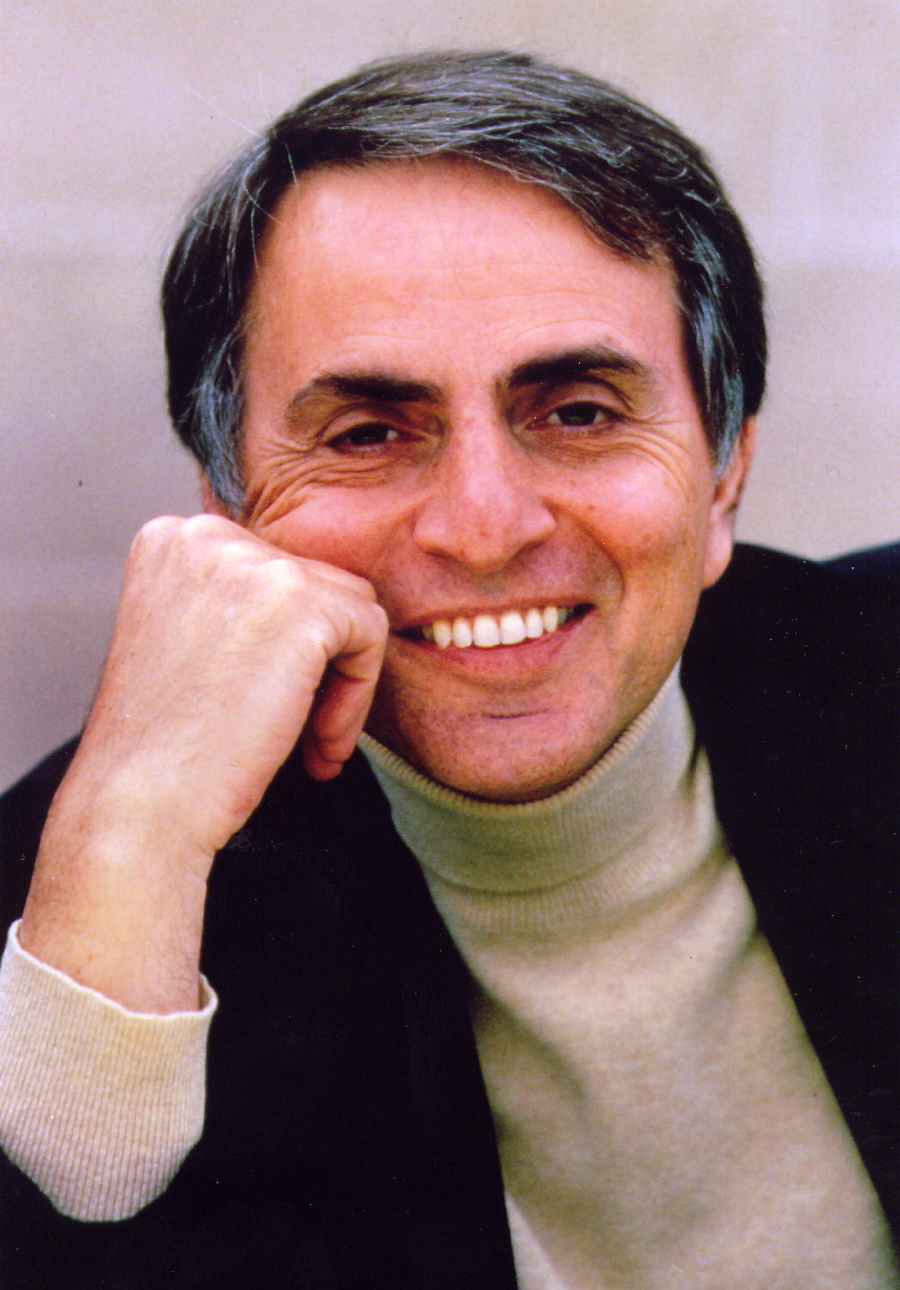By Litzi Aguilar

Carl Sagan was widely known as a scientific pioneer, serving as the world’s guide to space exploration. He was a complex character who was driven to succeed in his career path, becoming a millionaire and one of the most influential scientists of his time. His lifelong dream was to ensure science was accessible to everyone, fueling his work as a science communicator.
Carl Sagan was born November 9th, 1934 in Brooklyn, New York to a secular Jewish household. Though his family came from a poor background, his parents encouraged his interest in the natural world. Due to the support from his parents, he graduated from high school at the young age of 16 and went on to study at the University of Chicago. In 1955, he graduated with a B.A. in physics. Five years later, he earned a Ph.D. in astronomy and astrophysics before moving to California; where he helped the University of California develop an infrared radiometer for NASA’s Mariner 3 robotic probe.
By the age of 26, Sagan found himself at Harvard University and the Smithsonian Astrophysical Observatory. This is where his work for two particular planets began, Venus and Jupiter. His work focused on the physical conditions of these planets. From these studies, he proposed the idea of terraforming Venus into a habitable world. In 1968, Sagan became the director of Cornell University’s Laboratory for Planetary Studies, and three years later, he became a full-time professor.
In his 30s, he unabashedly spoke out on a range of issues that would gain him much attention. He believed in the possibility of interstellar flight; and the idea that Earth was visited by extraterrestrial aliens; even the possibility that alien creatures living in Jupiter’s atmosphere; it was also around this time that he testified before Congress about the existence of UFOs. All of these points turned him into a celebrity which helped him gain more traction of into his campaign for nuclear disarmament. This put him at odds with President Ronald Reagan, especially with the proposed Strategic Defense Initiative created to protect the United States from nuclear attacks.
Still pursuing his work with NASA, he helped pinpoint the locations where the Viking probes would touch down on Mars. He then helped create the messages that were to be sent out through the Pioneer and Voyager probes, probes that would be sent outside of the solar system. NASA also reached out to Sagan for a similar matter; to help create the first physical messages sent into space. These messages were meant to be universally understood by any extraterrestrial intelligence, a topic that Sagan was profoundly passionate about.
Alongside his work for NASA, he served as a consultant on the Stanley Kubrick film 2001: A Space Odyssey, though this was cut short due to personalities. He wrote The Cosmic Connection: An Extraterrestrial Perspective (1973), Other Worlds (1975), The Dragons of Eden: Speculations on the Evolution of Human Intelligence (1977; Pulitzer Prize winner) and his 1985 novel, Contact.
Most notably, Sagan had an award-winning television series called Cosmos: A Personal Voyage. He wrote a companion book of the same name to accompany the series. Then, published in 1994 was the book “Pale Blue Dot: A Vision of the Human Future in Space”, which was the sequel to Cosmos. The title was inspired by the famous “Pale Blue Dot” photograph, which shows Earth as a mere dot in space. Sagan used the photo taken by Voyager 1 as his introduction to discuss humanity’s place in the vast, never-ending universe and his vision of the future.
Throughout his career, Sagan won a grand total of 20 awards. Most notably, he was awarded NASA’s Distinguished Public Service Medal both in 1977 and 1981, then he was awarded the National Academy of Sciences’ Public Welfare Medal in 1994.
Just after his 62nd birthday, he passed away of pneumonia after struggling with the bone-marrow disease myelodysplasia. Because of his battle with this disease, it brought more attention to this particular condition and emphasized how important awareness and research into under-studied blood disorders was.
Though his life ended abruptly, his life and death left a huge impact on the world, changing the way many societies view the natural world and science. In 2014, Cosmos, his award-winning show, was brought back with Neil DeGrasse Tyson as the host to pay tribute to Sagan’s dream for humanity’s infinite quest for knowledge.

